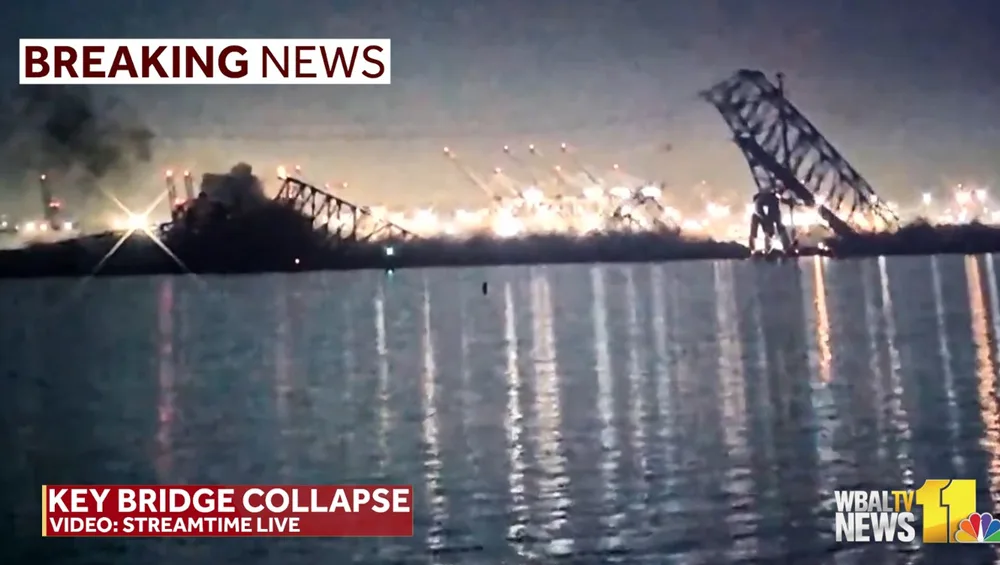
Baltimore Bridge Collapse Reinforces The Essential Need For Local Coverage


Emily Barr
Like so many of us, I awoke on Tuesday to the horrific news of the collapse of the Francis Scott Key Bridge that acted as a major artery across Baltimore Harbor.
My first instinct was to turn to a national cable channel so that I could better understand the alerts humming across my phone. But as the morning wore on, I found myself turning to the local stations in Baltimore and watching and reading their superb coverage on their websites.
Not only do they have the local knowledge and self-interest that elevates their coverage well beyond anything a national network or cable news channel might provide, but they are able to go deeper on everything from the heroic search and rescue operations; the victims and their impacted families and colleagues; the presumed cause (likely a tragic accident caused by a powerless and thus rudderless cargo ship); efforts to stop the flow of traffic and keep a number of cars off the bridge before the tragedy; complete coverage of the official press conferences; the helicopter footage supplied to all of the major cable channels and alternative routes for those individuals for whom this bridge was their daily commute.
I suppose I took particular interest in trying to understand what happened because I spent six years working in Baltimore television way back when and still feel a deep connection to the community and its people. In times like these, not only does a community like Baltimore depend on the news teams that cover every story large and small, but consider what CNN, Fox News or any of the other national outlets’ coverage might look like without the footage, institutional knowledge and helicopter video being handed to them as part of their own news sharing agreements with these outlets. We would all be far less informed and likely confused as a lack of facts and knowledge always breeds rumor and speculation.
Every survey done concerning trust in the media always points out that local TV news coverage is still the most valued and believable source of information. We know that local reporters and anchors tend to stick around and develop a personal connection with their viewers. Local news is largely devoid of commentary and innuendo, and because the people working in local news, by definition, are members of the communities they serve, they are more than capable of covering the news without bias or an agenda. That is really something in this day and age.
Last week, I had the privilege of meeting with a group of news directors and managers from all across the country who had gathered together as part of the Carole Kneeland Project for Responsible Journalism. The conversation was lively and urgent as they are all striving to do their level best to cover their respective communities and keep citizens informed despite the tsunami of misinformation and the cacophony assaulting us online and on social media platforms uninterested in determining if what they put out there is accurate or complete.
We talked a lot about the need for transparency, details and getting it right, and I left invigorated because I know how much these individuals care about the communities they cover. I have faith in them and tried to reiterate that what they do truly matters.
As the hours and days wear on, the Key Bridge collapse will quickly fade from the national headlines, but I know the men and women working in Baltimore’s local newsrooms (and that includes not only television but print and digital as well) will continue to ask the tough questions, delve into the details, tell the stories of the victims and the heroes and cover the complicated rebuilding of a bridge that literally connected the entire community.
Tragedies such as this and the understanding that comes from clear and thorough coverage have a way of pulling communities together. Just like the people of Baltimore, I expect nothing less. Local news coverage matters; you can count on that.
Emily Barr is the retired CEO of Graham Media Group and currently serves on the board of The Maine Monitor, an independent, nonpartisan investigative and explanatory journalism digital outlet focusing on public interest issues that impact Maine.
































Comments (2)
Ken Foote says:
March 27, 2024 at 10:39 am
Emily has the best perspective on things that involves tv!!!!
Former Producer says:
March 28, 2024 at 10:27 am
Local news coverage is essential. No doubt about it. But are broadcasters willing to invest the money needed for that essential local news coverage? I’m not sure.
Hedge fund investors are invading local news and cutting costs to squeeze whatever profits can be had. It’s not just newspapers either. Apollo took over Cox Media and turned a once-great company — one that was focused on quality journalism — into yet another “serve the shareholders and not the viewers” operation.
Other companies are eliminating the resources needed to produce that essential local news coverage. Sinclair shut down some of its smaller TV newsrooms in the past year. Scripps likewise cut back on live coverage — and in some cases, cut jobs as well — in order to focus on a “Scrippscast” that amounts to a YouTube playlist…but on TV. Let’s not forget about the buyouts and layoffs that targeted the veteran journalists in newsrooms large and small.
Am I being pessimistic? No. I’m being realistic. Local news coverage matters. But to the TV news industry, money matters more. Viewers be damned.